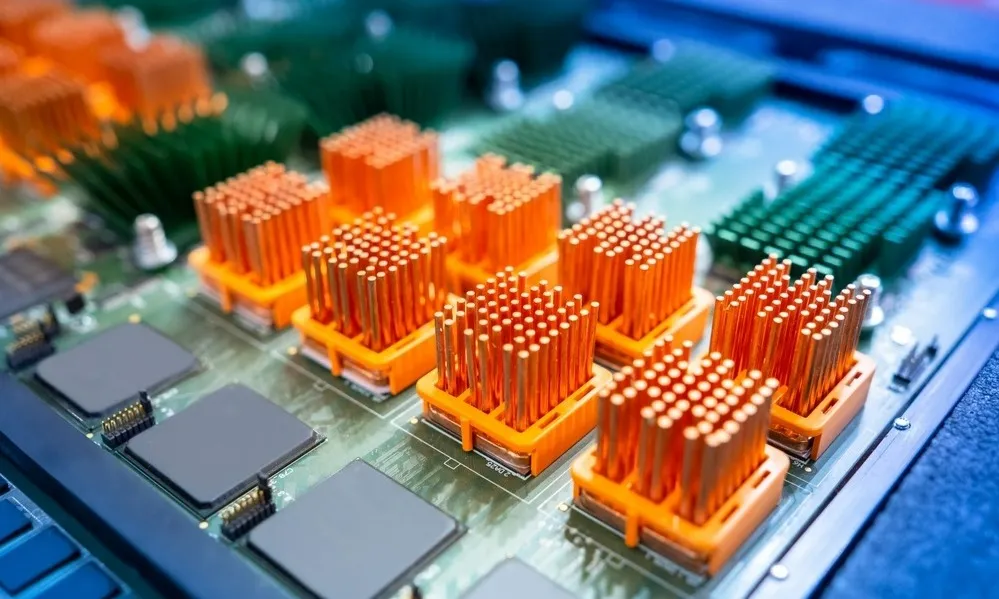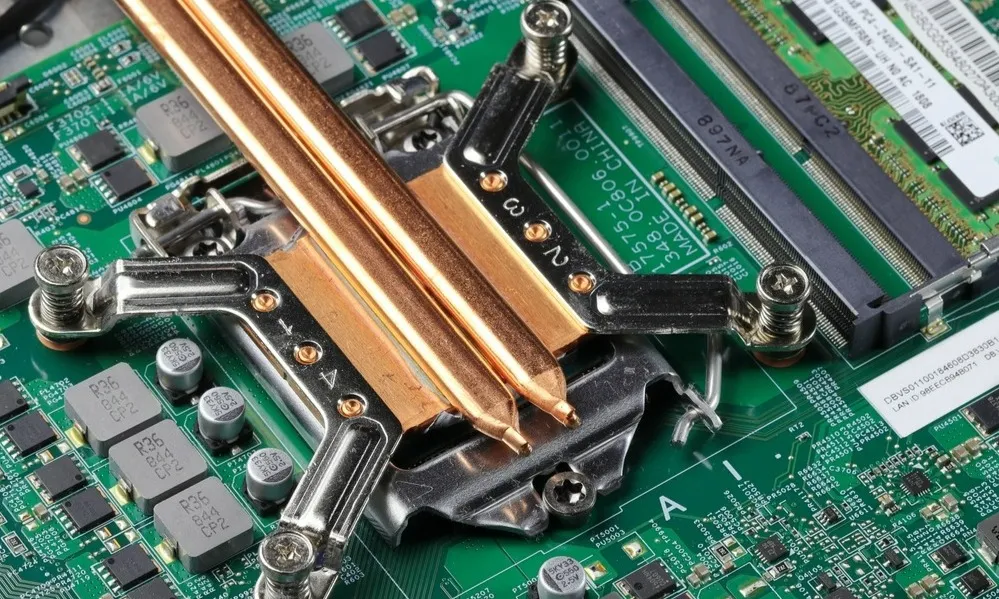In accordance with the European Union’s General Data Protection Regulation (GDPR), we are committed to safeguarding and ensuring your control over your personal data. By clicking “Accept All” you are permitting us to use cookies to enhance your browsing experience, assist us in analyzing website performance and usage, and deliver relevant marketing content. You can manage your cookie settings below. By clicking “Confirm” you are agreeing to the current settings.
Comprehensive Guide to Heat Sink Design

Modern electronics depend on heat sinks to dissipate heat and extend device life. Thus, heat sink design must consider material, surface area, and fin geometry. Heat sinks that maximize heat transfer cool components while benefiting device performance and reliability. Thus, high-performance electronics need painstakingly built heat sink designs, which highlight their place in the industry. This piece guides heat sink design for optimal thermal resistance, including its fundamentals, types, specifications, techniques, and manufacturing.
Fundamentals of Heat Sink Design
Electronics need heat sinks to disperse device heat by conduction, convection, and radiation. Acceptable operating temperatures optimize electronic component functionality and lifetime. The heat sink design needs a balance. They must transmit heat away from components in confined places while meeting the electronic device's power, size, and aesthetic criteria.
For this equilibrium, one must understand thermal dynamics and material science. Adjusting geometry for heat dispersion, airflow for convective cooling, and radiation surface area are key. Moreover, heat sink material also influences efficiency and electronic compatibility.
-
Material Considerations in Heat Sink Design
Aluminum and copper are used thanks to their high thermal conductivity. Aluminum possesses a thermal conductivity of 237 W/mK and is lighter and cheaper for general applications. On the other hand, copper offers a thermal conductivity of 398 W/mK for better heat dissipation but at a greater weight and cost. Graphite or composite materials are also embryonic owing to their properties like lower weight or custom thermal conductivities.
For instance, graphite is lightweight and can offer high thermal conductivity in-plane (up to 2200 W/mK). Still, its cost and anisotropic properties might limit its use. The material choice contains a trade-off between thermal performance, weight, and price. High-performance electronics require the thermal conductivity of copper despite its weight and cost. In contrast, consumer electronics might favor aluminum for its balance of functionality and affordability. Composites or graphite may be for specific applications to utilize their properties fully.
Designing for Optimal Thermal Resistance
Thermal resistance is a key parameter in heat sink design. It quantifies the temperature difference per power unit between the heat source and the heat sink. Further, it influences how effectively a heat sink can dissipate heat from electronic components. Lower thermal resistance means better heat dissipation to maintain the reliability of electronic devices.
-
How to Reduce Thermal Resistance?
Several strategies can decrease thermal resistance. For example, materials with high thermal conductivity are favored. Increasing the surface area through thinner, taller fins also improves heat dissipation. Plus, optimizing airflow around the fins and using thermal interface materials for contact between the heat source and the sink diminish thermal resistance.
Consequently, thermal resistance is essential to heat sink performance. It's vital for electronics' effective heat management. Electronic components last longer and don't overheat with a well-designed heat sink with low thermal resistance. Even little thermal management enhancements may increase efficiency and dependability in high-power applications.
Heat Sink Types and Design Specifics

In this part, let's elaborate on the heat sink types with design specifications.
-
Active Heat Sink Design
Active heat sinks are used for high thermal management efficiency with fans or blowers in densely packed electronic environments like server farms or high-performance computing systems. The fans augment airflow beyond what natural convection can attain. It expedites heat removal from CPUs, GPUs, and power transistors. Notably, the heat sink design involves adjusting fan placement and airflow direction for concentrated heat dissipation.
For instance, in a CPU cooler, the fan allows a steady airflow through the fins for maximal air contact. Besides, active heat sinks are indispensable in overclocked computing systems. It is where greater cooling handles the thermal load without compromising component reliability.
-
Passive Heat Sink Design
Passive heat sinks have no mechanical components and count on natural airflow. They have larger surface areas and unique fin designs to capitalize on air contact and heat dissipation. Found in low-power applications like LED lighting systems and consumer electronics, these heat sinks fit environments where noise reduction or power conservation dominates.
The heat sink design details involve calculating the best fin spacing and surface enlargement techniques like pin fins or fluted surfaces. Materials are picked for suitable thermal conductivity properties. Passive heat sinks benefit when the thermal load is predictable, including in certain power amplifiers. The steady heat generation can be managed by natural airflow without added power consumption or mechanical failure of active systems.
Heat Sink Design Techniques and Manufacturing
Key heat sink manufacturing techniques include CNC machining, extrusion, and die casting.
CNC accuracy and flexibility allow the production of heat sinks with complex shapes and good thermal conductivity for high-performance computer systems. Extrusion mass-produces heat sinks with simpler forms in consumer electronics, where cost is vital. Aluminum 6063 is used for its thermal qualities; the extrusion process's maximum width limits the process. Die casting may be used to construct elaborate and durable heat sinks for natural convection applications. It is perfect for automotive and industrial cooling systems with thicker fins.
Types of Fin Designs
Pin-fin or straight-fin fin designs depend on thermal performance and environmental circumstances. Pin-fin heat sinks can manage multidirectional airflow in aeronautical applications with changeable air patterns with their cylindrical or elongated protrusions. Its design is less likely to collect dust in dusty situations, rendering maintenance simpler.
However, straight-fin designs work well in forced convection with unidirectional airflow due to their enormous surface area. These are ideal for server racks and power electronics; airflow is regulated and steady. Meanwhile, wavy or louvered fins increase turbulence, which improves heat transmission in natural convection or when heat sink space is limited.
Precision in Thermal Resistance and Size Calculation
In calculating thermal resistance and sizing heat sinks, precision centers on detailed formulas that factor in parameters like junction temperature, ambient temperature, the thermal conductivity of interface materials, and dimensions of both the heat source and the heat sink.
Specifically, thermal resistance (Rhs) is calculated using the formula:
Rhs=(Tj−Tamb)/P−Rth−jc−Rinterface
Each component shows a vital aspect of heat transfer. The following convection and radiation formulas are used for sizing, alongside calculating the number of fins and their width.
Qc=2hA(Tcomponent−Tambient)
Qr=2εσA(T4component−T4ambient)
These calculations involve a balance between multiple heat transfer mechanisms. Calculating accuracy is key. Inadvertent errors in heat sink design cause suboptimal performance, overheating, and shortening component lives. Accurate estimates keep the heat sink within the established temperature range for device reliability. Heat dissipation in high-performance and sensitive electronic settings depends on precise heat sink thermal resistance and size measurements. So, careful calculation helps in effective thermal management.
Conclusion
The thorough heat sink design guide shows how heat sinks manage heat and boost device performance in contemporary electronics. Designing heat sinks requires thoughtful consideration of material qualities, thermal resistance, and fin structure. Aluminum and copper are common materials with thermal conductivity, weight, and cost trade-offs.
T-Global leads bespoke heat sink design with unique and efficient thermal management solutions. They sell aluminum heat sinks, ceramic heat spreaders, non-silicone thermal pads, and phase change materials. T-Global's XL-25 Ceramic Heat Spreader, built of aluminum nitride ceramic with superb thermal conductivity, and ceramic heat sinks, which give electrical isolation and corrosion resistance, demonstrate their competence.
These solutions and design support put T-Global at the top of thermal management technologies for consumer electronics, AI, 5G, and IoT. So, if you seek a heat sink design, contact us for experienced advice and high-quality solutions adapted to client needs.
